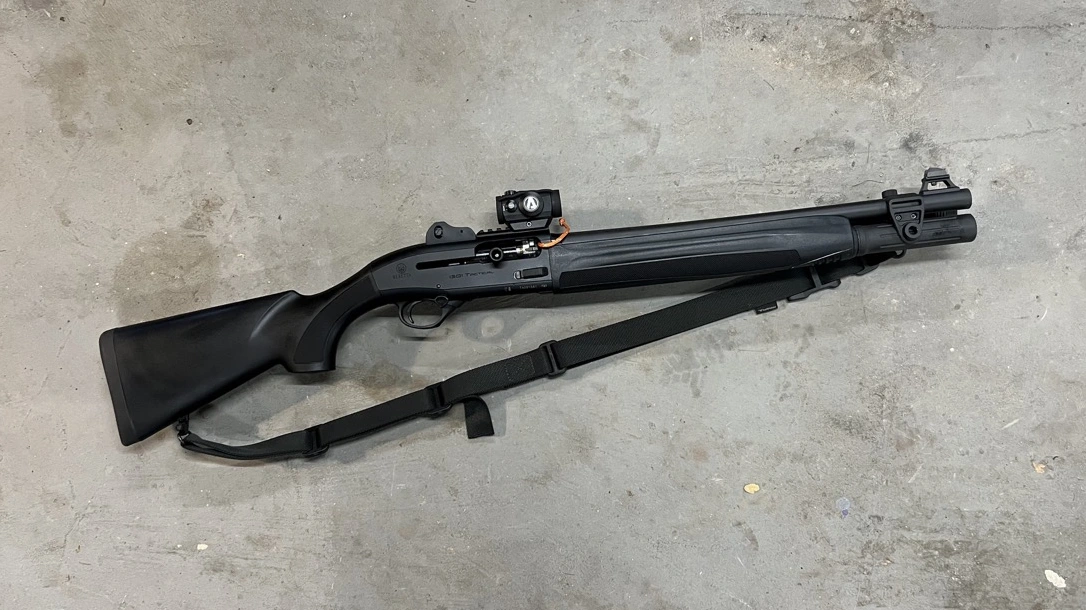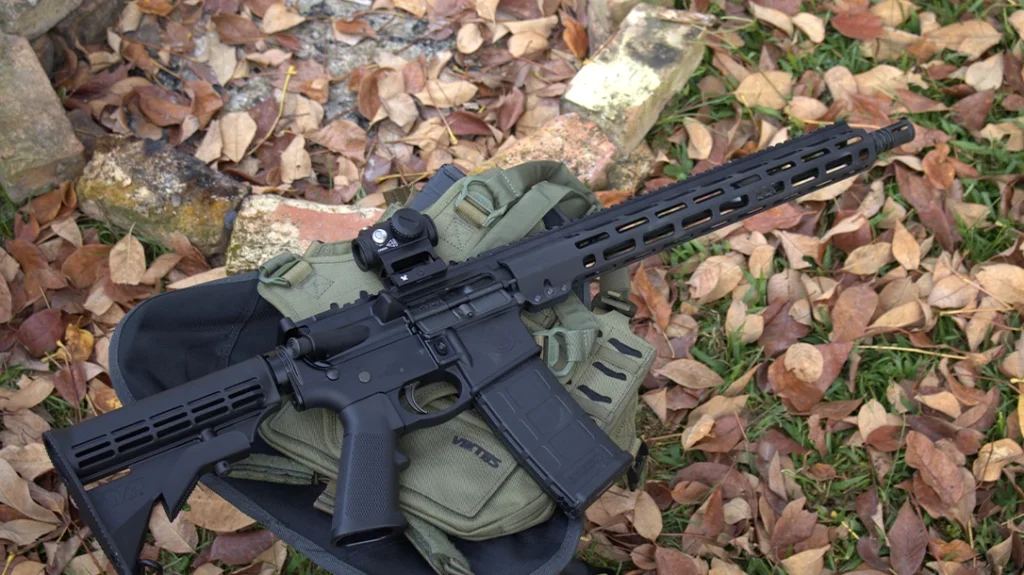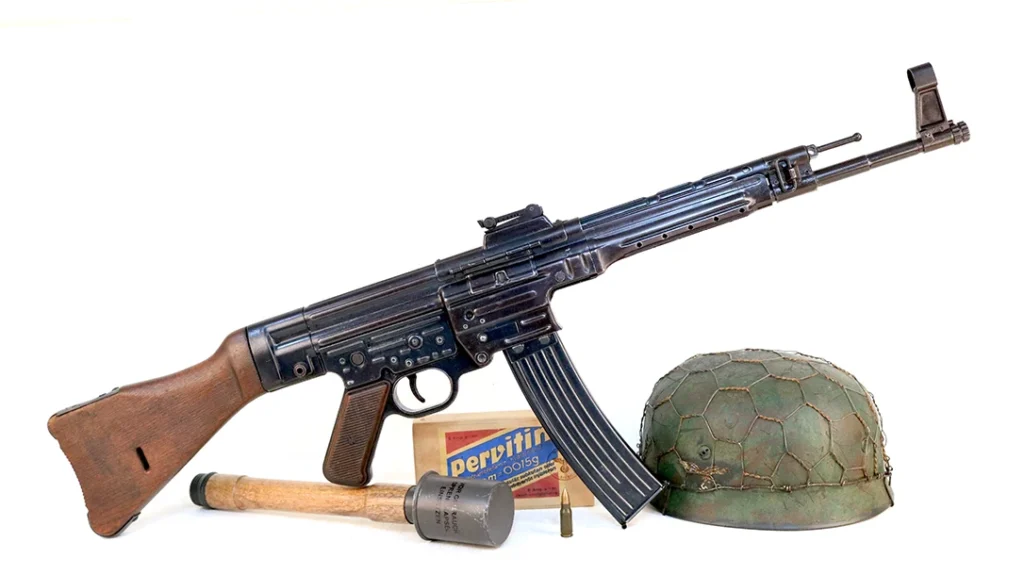Shotguns, known by many names like scattergun, peppergun, and even “scatgat,” have earned a trusted reputation as powerful tools for close-quarters defense. Their effectiveness in combat is well-documented—dating back to the Winchester Model 1897 (trench gun) used in WWI. However, these same qualities make the shotgun an excellent choice for close-quarters home defense today.
The Shotgun for Effective Close-Quarters Home Defense
The principles that made shotguns successful on the battlefield can be applied defensively in the home. This offers homeowners a formidable option to protect themselves and their families.
Few firearms are as effective as a shotgun within 25 yards. Shotguns excel at close-quarters combat, offering devastating stopping power. In situations where handguns may require permits or extra steps for ownership, shotguns provide a reliable alternative that doesn’t sacrifice effectiveness.
Advertisement — Continue Reading Below

But using a shotgun effectively for home defense involves more than just purchasing one and setting it aside. You need to understand key elements like reloading, chokes, ammo selection, and accessories to maximize its potential in a home defense scenario.
Proper Shotgun Handling
When using a shotgun for home defense, you need to carefully consider every aspect of gun handling. Think about where your house is located and who else lives in the building, especially if you’re renting. Penetration is a crucial factor—knowing what’s on the other side of a wall is key because it could be another person or an uninvolved party.
Advertisement — Continue Reading Below
Shotguns pack a lot of punch, but they’re often limited by their capacity. Most shotguns are fed by a magazine tube that runs under the barrel. Depending on the length, it will hold a set number of rounds. Some models come with capacity-limiting spacers, so be sure to know your shotgun’s setup.
Reloading Your Scattergun
A critical aspect of using a shotgun for defense is reloading efficiently. Because shotguns have a high power-factor but low capacity, you need to keep it fed. Regular practice will make reloading second nature, and there are various methods to try.
For beginners, the “violin” method, where the shotgun is brought onto the shoulder for easy access to the magazine tube, is effective and provides a stable position for follow-up shots.
Advertisement — Continue Reading Below

Advanced techniques like loading two shells at once can be mastered through dry-fire training with snap caps. Regardless of the method, consistent practice is key to staying confident and proficient in keeping your shotgun ready for action.
Shotgun Ammo Selection
Shotguns offer an overwhelming range of ammo choices, from birdshot to slugs. For home defense, 00 Buckshot is often the recommended choice. It typically contains nine .33 caliber lead balls, each traveling at around 1,100 feet per second—essentially the equivalent of firing nine rounds of 9mm simultaneously. Magnum loads offer even more pellets/velocity, sometimes up to 12, making them a potent defensive option.
Advertisement — Continue Reading Below

If you’re worried about over-penetration, opt for a lower-weight projectile with a wider spread. This helps reduce the chances of the shot carrying through sheetrock or doors. Again, the key is knowing exactly how your shotgun patterns at various distances.
Refining Pattern Control with Choke Tubes
However, ammo selection isn’t just about power; you need to balance spread and accuracy. This is where choke tubes come into play.
Advertisement — Continue Reading Below
Choke tubes are threaded into the end of your shotgun’s barrel to tighten or loosen the spread of the shot. For home defense, you want a choke that keeps the shot group small enough to be effective but not so tight that it sacrifices close-range efficiency. Aim for a “serving platter”-sized pattern at your farthest likely engagement distance in the home.

If you plan to use slugs, avoid any choke tubes other than those marked CYL (cylinder). Using the wrong choke with slugs can lead to dangerous malfunctions. It’s essential to test your ammo at the range and see how your chosen load patterns at the distances you’re likely to encounter in your home.
Advertisement — Continue Reading Below
Enhancing Your Shotgun’s Effectiveness with Accessories
It’s easy to get lost in the world of shotgun accessories. So, let’s focus on a few essentials that can enhance your effectiveness:
- Weapon-Mounted Light: Properly identifying and illuminating your target is crucial. A mounted light lets you see clearly and assess threats.
- Optics: In low-light scenarios, an optic can make target acquisition faster and more accurate, especially if iron sights become difficult to use.
- Sling: A sling is vital for maintaining control of your firearm. It allows you to free up your hands while keeping the shotgun securely attached to your body.
- Extra Ammo Storage: Whether in a side-saddle, sling-mounted cartridge holder or shotshell caddy, additional ammo is a must. Shotguns have limited capacity, so being able to top off quickly is essential.
These accessories can be lifesavers, but they’re only helpful if you’re comfortable and practiced with them.

Advertisement — Continue Reading Below
Training for Effective Home Defense
The best way to ensure that your shotgun is ready for home defense is through consistent training. Once you’ve chosen your shotgun and defensive load, spend time on the range practicing reloads, engaging targets, and working from different positions.
Start with the basics: dry fire, load your shotgun from both weak and strong hands, and practice shooting from cover. A shot timer can help you measure your speed and progress. Likewise, practicing from compromised positions like kneeling can give you a better feel for recoil control.
Don’t forget to incorporate reloading drills into your training. Shotguns, by nature, have lower capacity than handguns or rifles, so reloading quickly and efficiently is critical.
Advertisement — Continue Reading Below
Implementing a shotgun for home defense is an excellent choice, but it comes with a responsibility to train and use it properly. Reloading, ammo selection, and patterning are all essential skills that will help you effectively defend your home.
Invest in training, practice regularly, and make sure you’re comfortable with the gun and any accessories you choose to use.
Remember, gear alone won’t make you an effective shooter. Put in the time, train hard, and you’ll be ready to implement your shotgun safely and effectively in your home defense plan.
Keep your finger out of the trigger guard until you’re ready to shoot.
Shoot safe!
























